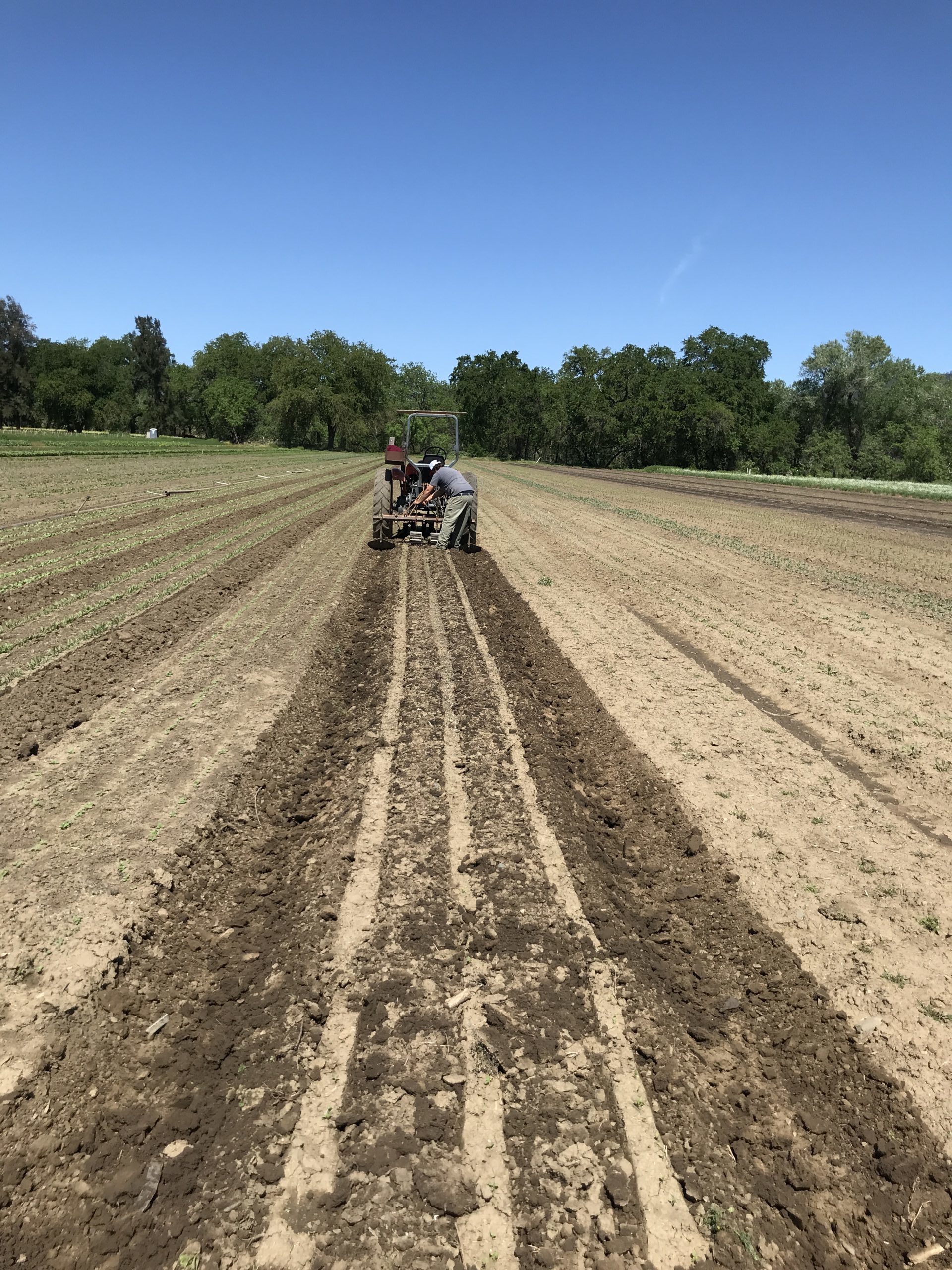
Cache Creek – photo credit Ben Lindheim
Now that it’s April, we can officially say that we didn’t have a “Miracle March” to provide the precipitation that we needed after the historically dry January and February. We got about half an inch on Monday, which is certainly better than nothing. It was refreshing and was enough to pause some of our tractor work for a few days, but by the end of the week, the farm was once again humming with the sound of tractors – transplanting, mowing, cultivating, prepping beds.
We’re frequently asked how our water situation is and how we’ll be impacted. The very short answer is: it’s not good, but we don’t know yet quite how bad.
We irrigate our fields with surface water from Cache Creek or from the Rumsey Irrigation Ditch (a diversion of Cache Creek), or from groundwater via wells. In a normal year, about two-thirds of our irrigation water is from surface water. Last year, water releases to Cache Creek from Clear Lake and Indian Valley Reservoir ended early. Water levels in the Creek dropped very low and there wasn’t enough water diverted to the Ditch for all users’ needs or for excess water to return to the Creek. Water withdrawals from the Ditch were limited to users with riparian rights, leaving out many farmers in our area. Water in California is complicated and contentious; every drop of water in our state is wrapped up in a confusing web of water laws, water rights, and government agencies. Last August, Judith wrote about the situation we were facing. We don’t know yet what the regulations will be for 2022.
Our wells serve as a backup source of water on some, but not all of our fields. Last year we had to stop using one after it started drawing air and two others because they were negatively impacting our neighbors’ water levels.
The lack of water is forcing all of us, not just farmers, to analyze how we use water and how we’ve often taken it for granted. It’s forcing many farmers to make changes to how or what they grow. Some are (finally) adopting water-conscious growing practices that they could have adopted years ago, and there’s government support for these changes, such as funding provided through the State Water Efficiency and Enhancement Program (SWEEP) Program. Others are temporarily pulling fields out of production. One of our neighbors has decided to not farm this summer while they wait to drill a deeper well. Our situation isn’t as bad. We know we have water for a while but don’t know how long it will last. We don’t want to start growing a crop that won’t make it to maturity so fields that don’t have a well won’t be planted. In fields with wells, we’ll be testing the limits of how much water our plants really need. One thing that isn’t up for debate is our commitment to keep making long-term investments in our soil’s organic material and structure to increase its ability to hold water. Being responsible stewards of our land will make us a more resilient farm and help mitigate our impact on the planet.
– Elaine Swiedler, CSA Manager

